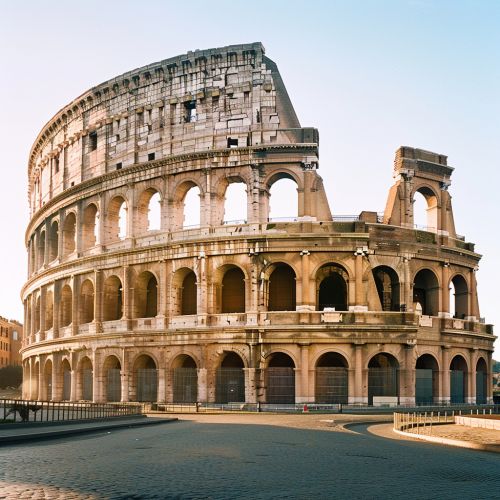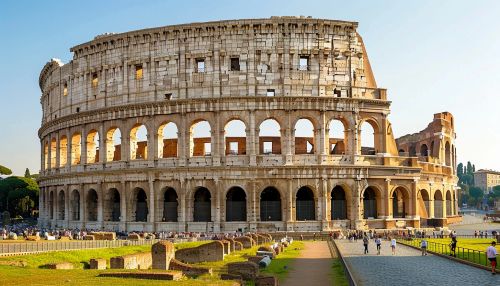Colosseum
History
The Roman Empire was known for its architectural prowess, and the Colosseum stands as a testament to this. Constructed between 70-80 AD, the Colosseum, also known as the Flavian Amphitheatre, was commissioned by Emperor Vespasian of the Flavian dynasty as a gift to the Roman people. It was completed by his son, Titus, with later modifications made under the reign of Domitian.


Architecture
The Colosseum is an elliptical structure measuring 189 meters long, 156 meters wide, and 50 meters high. This amphitheater could accommodate approximately 50,000 spectators who could enter the building through no less than 80 entrances. Above the ground are four storeys, the upper storey contained seating for lower classes and women. The lowest storey was preserved for prominent citizens. Below the ground were rooms with mechanical devices and cages containing wild animals. The cages could be hoisted, enabling the animals to appear in the middle of the arena.
Events
The Colosseum was used for gladiatorial contests, mock sea battles, animal hunts, executions, re-enactments of famous battles, and dramas based on Classical mythology. The building ceased to be used for entertainment in the early medieval era. It was later reused for such purposes as housing, workshops, quarters for a religious order, a fortress, a quarry, and a Christian shrine.
Modern Day
Despite the extensive damage it has suffered over the centuries, including lightning and earthquakes, the Colosseum is still an iconic symbol of Imperial Rome. It is one of Rome's most popular tourist attractions and also has links to the Roman Catholic Church, as each Good Friday the Pope leads a torchlit "Way of the Cross" procession that starts in the area around the Colosseum.
